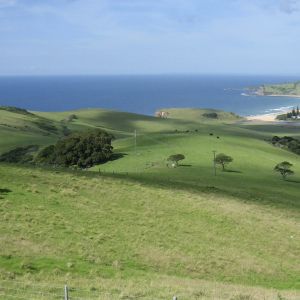Climate Change in Australia
Climate information, projections, tools and data
Projections landscape
Next Generation Climate Projections Strategy
After the release of the original Climate Change in Australia national climate change projections in 2015, Australia’s national climate projections strategy was initially shaped by the National Environmental Science Programme (NESP). In late 2017, NESP hosted an Australian projections community NextGen Projections Workshop and released a NextGen Projections report in 2021. The main conclusions were:
- Projections must serve an evolving set of needs and uses, current and new users, and new scientific developments.
- Projections underpinned by the CMIP5 generation of global climate modelling should be updated to use the more recent CMIP6 generation of global climate modelling. Further, they should incorporate a coordinated program of regional downscaling, using the international Coordinated Downscaling Experiment (CORDEX) as a key data source.
- A multi-model downscaling ensemble produced through partnership can be used in a complementary way with CMIP6 itself, ‘large ensembles’ of CMIP6 models (many runs of the same model), further very high-resolution modelling and techniques such as machine learning.
This plan was consistent with the Climate Science for Australia’s Future report from the National Climate Science Advisory Committee (NCSAC, 2019), and was further called for and endorsed by Recommendation 4.5 of the Royal Commission into National Natural Disaster Arrangements (the ‘Bushfire RC’).
The plan and the partnerships required was then supported through the formation of the National Partnership for Climate Projections (NPCP) and the publication of the Climate Projections Roadmap for Australia. NPCP includes representatives of Australian and State and Territory Government agencies, peak science bodies and universities.
CMIP6-based climate projections
New national climate projections being produced for Australia are underpinned by the CMIP6 global climate modelling. The Climate Change in Australia website provides access to application-ready, locally relevant datasets based on ‘quantile scaling’ of observations using output from selected CMIP6 global models. This dataset is an evolution of the CMIP5-based application-ready data provided in 2015. It is useful for many applications and shares many of same features and limitations as the CMIP5 version.

In addition to the CMIP6-based application-ready data, new resources based on new multi-model regional downscaling for Australia are now emerging. The climate modelling for these is from four partners: CSIRO and the Bureau of Meteorology (through Program 3 of the Australian Climate Service), the NSW and Australian Regional Climate Modelling project phase 2 (NARCliM2.0) and Queensland Future Climate.
All partners use a carefully-selected set of CMIP6 global models to provide inputs to their regional modelling. Two internationally standard scenarios for future emissions of greenhouse gases (SSPs) are modelled. These bracket a range of plausible futures: where we broadly meet the goals of the Paris Agreement (SSP1-2.6) and a high emissions future with high levels of further climate change (SSP3-7.0). Some programs will have output for a moderate scenario most consistent with current emissions-mitigation policy and pledges (SSP2-4.5), and some for a scenario with extremely high future emissions (SSP5-8.5). All projections can be used to derive projections for Global Warming Levels.
National projections datasets suitable for downstream applications are being produced from the regional modelling. A series of bias adjustment techniques have been trialed and compared, and a data release is being finalised for research and technical users.
Other sources of climate projections
Complementing Climate Change in Australia, State Government initiatives are making available climate projections tailored for their regions. For more information on resources from individual States see:
Renewables, Climate and Future Industries Tasmania South Australian climate projections viewer WA climate projections Queensland Future Climate AdaptNSW Victoria’s changing climatePage last updated: 19th May 2025



